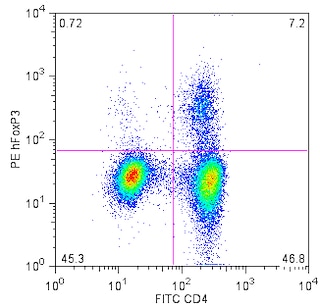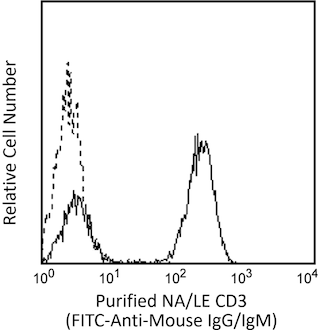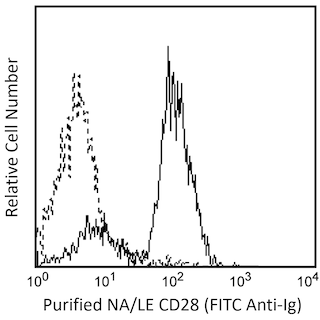-
Reagents
- Flow Cytometry Reagents
-
Western Blotting and Molecular Reagents
- Immunoassay Reagents
-
Single-Cell Multiomics Reagents
- BD® AbSeq Assay
- BD Rhapsody™ Accessory Kits
- BD® Single-Cell Multiplexing Kit
- BD Rhapsody™ Targeted mRNA Kits
- BD Rhapsody™ Whole Transcriptome Analysis (WTA) Amplification Kit
- BD Rhapsody™ TCR/BCR Profiling Assays for Human and Mouse
- BD® OMICS-Guard Sample Preservation Buffer
- BD Rhapsody™ ATAC-Seq Assays
-
Functional Assays
-
Microscopy and Imaging Reagents
-
Cell Preparation and Separation Reagents
-
Dehydrated Culture Media
-
- BD® AbSeq Assay
- BD Rhapsody™ Accessory Kits
- BD® Single-Cell Multiplexing Kit
- BD Rhapsody™ Targeted mRNA Kits
- BD Rhapsody™ Whole Transcriptome Analysis (WTA) Amplification Kit
- BD Rhapsody™ TCR/BCR Profiling Assays for Human and Mouse
- BD® OMICS-Guard Sample Preservation Buffer
- BD Rhapsody™ ATAC-Seq Assays
- Canada (English)
-
Change country/language
Old Browser
Looks like you're visiting us from {countryName}.
Would you like to stay on the current country site or be switched to your country?


.png)

Multicolor flow cytometric analysis of GARP expressed on activated human peripheral blood lymphocytes. Human peripheral blood mononuclear cells (PBMC) were activated (12 hours) with plate-bound Purified NA/LE Mouse Anti-Human CD3 (Cat. No. 555329) and Purified NA/LE Mouse Anti-Human CD28 (Cat. No. 555725) antibodies. The activated PBMC were washed and stained with either BD Horizon™ PE-CF594 Mouse IgG2b, κ Isotype Control (Cat. No. 562305, Left Panel) or BD Horizon™ PE-CF594 Mouse Anti-Human GARP (Cat. No. 562503, Right Panel). The cells were then washed and stained with PE Mouse Anti-Human FoxP3 (Cat. No. 560046/560082) using FoxP3 staining protocol. Two-color flow cytometric dot plots showing the correlated expression of FoxP3 versus GARP (or Ig isotype control) were derived from events with the forward and side light-scatter characteristics of intact lymphocytes. Flow cytometry was performed using a BD™ LSR II Flow Cytometer System.
.png)

BD Horizon™ PE-CF594 Mouse Anti-Human GARP
.png)
Regulatory Status Legend
Any use of products other than the permitted use without the express written authorization of Becton, Dickinson and Company is strictly prohibited.
Preparation And Storage
Recommended Assay Procedures
Suggested Staining Procedure for APC anti-Human GARP Antibody:
1. Harvest PBMC after stimulation (12 hours) with Purified NA/LE Mouse Anti-Human CD3 (Cat. No. 555329) and Purified NA/LE Mouse Anti-Human CD28 (Cat. No. 555725).
2. Wash the cells twice with stain buffer (eg. BD Pharmingen™ Stain Buffer (FBS) (Cat. No. 554656).
3. Stain 1X10^6 cells either with the PE-CF594 anti-Human GARP antibody (Cat. No. 562503) or with PE-CF594 Mouse IgG2b, κ Isotype Control (Cat. No. 562305) for 30 minutes on ice, protected from light.
4. Wash cells twice with stain buffer.
5. Stain for FoxP3. Refer to the Technical Data Sheet of PE Mouse Anti-Human FoxP3, Cat. No. 560046 or 560082, for detailed FoxP3 staining protocol.
In brief,
a. Add 2 ml of 1 X FoxP3 buffer A to the cell pellet.
b. Centrifuge and incubate in 0.5 ml of buffer C for 30 minutes.
c. Wash twice with stain buffer and stain with PE Anti-Human FoxP3 antibody (Cat. No. 560046 or 560082) for 30-45 minutes.
d. Wash twice with stain buffer and acquire on the Flow cyotmeter.
Note: BD Pharmingen™ Human FoxP3 Buffer Set (Cat. No. 560098) is a suggested companion product.
Product Notices
- This reagent has been pre-diluted for use at the recommended Volume per Test. We typically use 1 × 10^6 cells in a 100-µl experimental sample (a test).
- Source of all serum proteins is from USDA inspected abattoirs located in the United States.
- An isotype control should be used at the same concentration as the antibody of interest.
- Please refer to www.bdbiosciences.com/us/s/resources for technical protocols.
- Please observe the following precautions: Absorption of visible light can significantly alter the energy transfer occurring in any tandem fluorochrome conjugate; therefore, we recommend that special precautions be taken (such as wrapping vials, tubes, or racks in aluminum foil) to prevent exposure of conjugated reagents, including cells stained with those reagents, to room illumination.
- Caution: Sodium azide yields highly toxic hydrazoic acid under acidic conditions. Dilute azide compounds in running water before discarding to avoid accumulation of potentially explosive deposits in plumbing.
- For fluorochrome spectra and suitable instrument settings, please refer to our Multicolor Flow Cytometry web page at www.bdbiosciences.com/colors.
- Texas Red is a registered trademark of Molecular Probes, Inc., Eugene, OR.
- CF™ is a trademark of Biotium, Inc.
- When excited by the yellow-green (561-nm) laser, the fluorescence may be brighter than when excited by the blue (488-nm) laser.
- This product is provided under an Agreement between BIOTIUM and BD Biosciences. The manufacture, use, sale, offer for sale, or import of this product is subject to one or more patents or pending applications owned or licensed by Biotium, Inc. This product, and only in the amount purchased by buyer, may be used solely for buyer’s own internal research, in a manner consistent with the accompanying product literature. No other right to use, sell or otherwise transfer (a) this product, or (b) its components is hereby granted expressly, by implication or by estoppel. This product is for research use only. Diagnostic uses require a separate license from Biotium, Inc. For information on purchasing a license to this product including for purposes other than research, contact Biotium, Inc., 3159 Corporate Place, Hayward, CA 94545, Tel: (510) 265-1027. Fax: (510) 265-1352. Email: btinfo@biotium.com.
- Because of the broad absorption spectrum of the tandem fluorochrome, extra care must be taken when using multi-laser cytometers, which may directly excite both PE and CF™594.
Companion Products

.png?imwidth=320)




The 7B11 (also known as CMSSC-7B11) monoclonal antibody specifically binds to human GARP (Glycoprotein A repetitions predominant). The LRRC32 (Leucine rich repeat containing 32) gene encodes the 662 amino acid-residue, 80 kDa transmembrane GARP glycoprotein that has an extracellular region composed primarily of 20 leucine-rich repeats. GARP is specifically expressed on Treg cells activated through the T cell receptor (TCR). Ectopic expression of GARP in human naïve T cells inhibited their proliferation and cytokine secretion upon TCR activation. Remarkably, GARP over-expression in naïve T cells induced expression of FoxP3 and endowed them with a partial suppressive function. The extracellular, but not the cytoplasmic region, of GARP was necessary for these functions. GARP serves as a receptor for latent TGF-beta which may play a role in the suppressive action of Treg cells. GARP is also expressed on platelets and other tissues, however the function on these cells is not known.
This antibody is conjugated to BD Horizon™ PE-CF594, which has been developed exclusively by BD Biosciences as a better alternative to PE-Texas Red®. PE-CF594 excites and emits at similar wavelengths to PE-Texas Red® yet exhibits improved brightness and spectral characteristics. Due to PE having maximal absorption peaks at 496 nm and 564 nm, PE-CF594 can be excited by the blue (488-nm), green (532-nm) and yellow-green (561-nm) lasers and can be detected with the same filter set as PE-Texas Red® (eg 610/20-nm filter).

Development References (2)
-
Ollendorff V, Noguchi T, deLapeyriere O, Birnbaum D. The GARP gene encodes a new member of the family of leucine-rich repeat-containing proteins. Cell Growth Differ. 1994; 5(2):213-219. (Biology). View Reference
-
Stockis J, Colau D, Coulie PG, Lucas S. Membrane protein GARP is a receptor for latent TGF-beta on the surface of activated human Treg. Eur J Immunol. 2009; 39(12):3315-3322. (Biology). View Reference
Please refer to Support Documents for Quality Certificates
Global - Refer to manufacturer's instructions for use and related User Manuals and Technical data sheets before using this products as described
Comparisons, where applicable, are made against older BD Technology, manual methods or are general performance claims. Comparisons are not made against non-BD technologies, unless otherwise noted.
For Research Use Only. Not for use in diagnostic or therapeutic procedures.
Report a Site Issue
This form is intended to help us improve our website experience. For other support, please visit our Contact Us page.